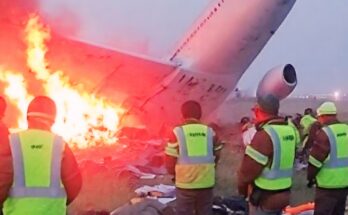
The F-35 Lightning II is one of the most advanced and versatile fighter jets ever developed. Designed by Lockheed Martin, it represents the pinnacle of fifth-generation combat aircraft technology, combining stealth, speed, agility, and advanced electronics. Built to perform multiple roles—air superiority, ground attack, and reconnaissance—the F-35 serves as the cornerstone of modern air power for the United States and its allies.
Development of the F-35 began in the 1990s under the Joint Strike Fighter (JSF) program. The goal was ambitious: to create a family of aircraft that could meet the needs of different military branches while sharing common technology to reduce costs. It was meant to replace older fighters such as the F-16 Fighting Falcon, AV-8B Harrier, and F/A-18 Hornet. After years of testing and refinement, the F-35 entered service in the early 2010s and has since been adopted by over 20 countries.
The program produced three main variants, each designed for specific operational requirements. The F-35A is the conventional takeoff and landing version used by the U.S. Air Force and most allied nations. It operates from standard runways and is optimized for air combat and ground strike missions. The F-35B is the short takeoff and vertical landing (STOVL) variant used by the U.S. Marine Corps and several other navies. It can take off from shorter decks and land vertically, making it ideal for amphibious ships and small aircraft carriers. The F-35C is the carrier-based model with larger wings, a stronger landing gear, and folding wingtips designed for catapult launches and arrested recoveries on aircraft carriers.
Stealth is a defining feature of the F-35. Its sleek design and radar-absorbent materials make it nearly invisible to radar. Weapons are stored internally to maintain its low radar signature, though it can carry additional weapons externally when stealth is less critical. The aircraft’s Pratt & Whitney F135 engine is one of the most powerful fighter engines in the world, giving it a top speed of Mach 1.6 (around 1,200 mph) and a combat radius of about 670 nautical miles.
The F-35’s true strength, however, lies in its advanced electronics and sensors. Its AN/APG-81 AESA radar can detect, track, and engage multiple targets at long range. The Distributed Aperture System (DAS) provides the pilot with 360-degree situational awareness, while the Electro-Optical Targeting System (EOTS) allows precision targeting and reconnaissance. All of these systems are integrated through advanced software that fuses data from various sources, giving the pilot a complete picture of the battlefield. The aircraft can share this information with other F-35s, ships, and ground forces, acting as a critical information hub in modern warfare.
Armed with a mix of AIM-120 AMRAAM, AIM-9X Sidewinder, and precision-guided bombs, the F-35 can strike targets in the air or on the ground with remarkable accuracy. Despite early criticism over cost and delays, the program has matured significantly. The price of the F-35A has fallen below $80 million per unit, making it comparable to older fourth-generation fighters.
Today, the F-35 Lightning II forms the backbone of NATO and allied air forces. Its combination of stealth, versatility, and advanced networking makes it more than just a fighter—it’s a force multiplier designed for the complex battles of the 21st century. As production continues and new upgrades roll out, the F-35 will remain a key part of global air power for decades to come.


